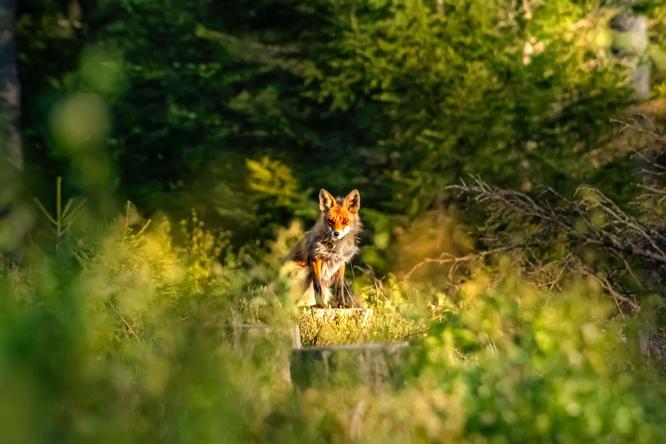
Now that we have received the last route report, we can present you with the nationwide routes of the individual game species for the 2019/20 hunting year. Overall, 2019/20 was a rather better hunting year.
There are seven game species where a record result was shot. And the problem children hare, pheasant and duck are also showing a slight upward trend compared to previous years. Only the wood pigeon continues its downward trend.
PREDICTORY
© Erik Karits/unsplash. The fox route is impressive in 2019/2020. But sometimes 200,000 more have been killed.
Badger: With a record number of 88,896, this predator continues its decade-long positive trend. Especially in the south of the republic, Grimbart lives dangerously. In general, badgers seem to feel more at home here, where it is a little warmer. Maybe he's the big beneficiary of global warming.
Fuchs: Compared to the rabbit route, 454,024 redcoats shot is still plenty, but over 200,000 more have been shot in the past. Maybe Reineke misses the rabbits after all.
Raccoon dog: With 33,440 Enoks, more were killed than ever before in Germany. The high distance in Schleswig-Holstein is striking. The northernmost federal state has replaced the former main raccoon dog states of Mecklenburg-Western Pomerania and Brandenburg. It seems the raccoon dog is more comfortable in colder climes. In any case, the settlement of the south is progressing at a much more leisurely pace.
Raccoon: For the first time, over 200,000 raccoons were killed in Germany. Exactly there were 202,293 pieces. The prophecy that the small bear will become Germany's most common predatory species in the foreseeable future is not unfounded. The distance has doubled in just six years. And now there are federal states where more raccoons than foxes are killed.
Martens: Beech and pine martens are more common again, at least more of both were killed in 2019/20 than in previous years. What is particularly astonishing when evaluating the route is that there are obviously no pine martens in Thuringia. In any case, not even one was run over here. Or the local authorities proceed according to the motto: It is not what should not be. After all, pine martens have a year-round closed season in Thuringia.
SHELL GAME
© Diana Parkhouse/unsplash. Little changes with the king of the forest. The route has been constant for eight years.
Red deer: The nationwide route has been at a constant level over the past eight years. It remains to be seen to what extent the official preference for forests over wild animals will change this. Luckily there are still enough forest owners who enjoy wildlife.
Fallow deer: With 68,015, the second-highest distance ever recorded in Germany was shot. And that despite increased occurrences of wolves, especially in the fallow deer strongholds of Mecklenburg-Western Pomerania, Brandenburg and Lower Saxony.
Roe deer: The distance of 1,226,250 means: new record! Although in more and more federal states the shooting plan is now being dispensed with - in the future probably throughout Germany - the trend towards increasing hunts continues. This makes it clear that we hunters know how to treat the game entrusted to us with care.
Wild boar: After a record number of 836,658 sows was achieved just two years ago, this is like yesterday's snow. Because the 2019/20 range of 882,112 sows means a record increase of a whopping 45,454 sows. Whether the one million mark will be reached in the foreseeable future depends on the success of the fight against African swine fever.
Chamois: With 4,641 animals, the range is roughly at the level of the last ten years. Basically, only Bavaria decides about the weal and woe of this wild species.
Mouflon: The 7,226 mouflon that were shot in 2019/20 correspond to the route from ten years ago. If you consider that the wolf has already finished off this game in many places, there are apparently still regions where this game is hunted with care.

OTHER WILD
© Vincent van Zalinge/unsplash. Pleasing: The nationwide route is growing. Slowly but growing.
Hare: With 229,945, almost 30,000 more hares were killed in 2019/20 than in the previous year. That gives reason for hope. Especially because in 2018/19 a few more crankies were shot than in the previous year. In addition, hares are being hunted more and more cautiously due to the lack of demand. Apparently, the dry summers of recent years are coming to Lamp.
Rabbits: With 88,467 Laputzen, their range is only slightly higher than last year, but again under 100,000. Especially under the influence of Corona, it is frightening to see how much a virus can tithe a kind.
Pheasant: With 107,850 pieces, over 100,000 pheasants were shot for the first time in three years. Even if that is still a long way from the former record distances, this value is still positive.
Partridge: The 1,842 partridges shot are just above the minus record of two years ago. Political will decides whether this wild species will survive in this country. Due to the funds required for this and the headwind from the so-called conservationists, it is questionable who should raise it.
Pigeons: The distance of 369,553 pieces means a sad minus record, fortunately the only one of the 2019/20 hunting year. The reason for this decline lies on the one hand in the greatly reduced hunting season, on the other hand in the increasing pressure of predators - keywords are eagle owls and common ravens. Outside of built-up areas, this wild species has a hard time raising young.
Wild ducks: After two years, the total of 295,881 broad-billed ducks has increased again. If everyone knew how delicious grilled breasts tasted, it could become a trend.
Wild geese: 115,095 geese shot are another record result. The more results from the steadily increasing Egyptian goose route, among other things. Lower Saxony and North Rhine-Westphalia alone killed over 20,000 of this invasive species.
Corvids: The 482,620 carrion crows and magpies killed illustrate the pressure that hares, partridges and ground-nesting birds have to cope with today. Intensive corvid hunting does not take place in every territory.
sow stretches
Due to the current African swine fever situation and the record track result, we took a closer look at the sow tracks in the individual federal states this year (see maps of the federal states). This is how we determined how many sows were shot per 100 hectares in which federal state. Saarland is the leader with 5.11 sows per 100 hectares, the fewest sows per 100 hectares were shot in Schleswig-Holstein - apart from the city states. So if you are particularly interested in hunting sows, you should consider moving to Saarland, or maybe even to Rhineland-Palatinate – if you don’t already live there.
Then we looked up the maximum distance traveled in each state prior to 2019/20 and compared that to the most recent distance travelled. The differences are striking. In 2019/20 in Rhineland-Palatinate, for example, 12.88 percent more sows were killed than the previous record value, while in Hesse it was 12.11 percent fewer. And that, where both federal states border on each other. And Hessen borders Thuringia, which also achieved record results in 2019/20. How these differences can be explained, who knows? Your hunter will try to find out. And last but not least, we wanted to know what share each federal state had in the nationwide sow route. Take a look for yourself:
The sow route for the individual city-states in the 2019/20 hunting year.
Bavarian sow stretch 2019/20
Baden-Württemberg sow stretch 2019/20
Sow route Rhineland-Palatinate 2019/20.
Sow stretch Schleswig-Holstein 2019/20.
Mecklenburg-Western Pomerania sow stretch 2019/20.
Brandenburg sow stretch 2019/20.
Lower Saxony sow stretch 2019/20.
Sow stretch Thuringia 2019/20.
Sow stretch Hesse 2019/20.
North Rhine-Westphalia sow stretch 2019/20.







